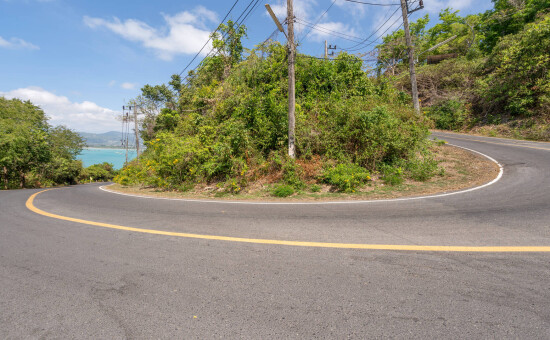A guide to transportation in the Philippines
Go island hopping or jump on a wild Jeepney ride; our Philippines transportation guide will help you plan your perfect itinerary.

With unmatched natural beauty stacking the cards in its favor, it’s hard to beat the Philippines if you are looking for a destination that offers something for every kind of traveller. Be it island getaways or mountain vacations, you’ve got to love the Philippines for its versatility. What also makes it unique is the affordable transportation options that one can avail to travel across the length and breadth country. Whether you are seeking an adventurous journey into its remote towns and villages, or you want to hit the most popular hotspots, you’ll always find a bus, flight or a ferry to take you there.
An archipelago of more than 7,000 islands, travelling through the Philippines is a unique experience. Since most destinations you’ll probably want to visit will be located on different islands, it is highly likely that your itinerary will be a combination of multiple modes of transportation. To make this process simpler for you, here’s a complete guide to the Philippines’ transportation network.
How to travel across the Philippines
Catch a flight
Home to 3 domestic airlines, namely, AirAsia Philippines, Cebu Pacific and the Philippines Airlines, the country has excellent flight connectivity among its 70 airports scattered across the country. If your itinerary includes destinations such as Manila, Cebu, Puerto Princesa, Boracay, Davao, Tacloban, Bohol, among others, you will easily be able to find affordable flights between these cities.
There are several other destinations serviced by these airlines so irrespective of what your itinerary looks like, it’s a good idea to browse flights to see what routes are available. If you notice, the above-mentioned destinations are all located on far-flung islands making it almost imperative to catch a flight on these routes.
Hop on a ferry
Travelling between adjacent or nearby islands on a ferry is probably the most exciting thing about the transportation scene in the Philippines! Live all your tropical island-hopping dreams here and get an opportunity to get into the heart and soul of the country.

Typically, you should be able to find multiple ferry options on the same route, from different operators as well as of different categories. Ferries in the Philippines can be either standard/tourist ferries, fitted with basic, comfortable seats, toilets on board and air-conditioning, or you could also opt for business/first class ferries that have better seats for a more comfortable journey.
Worried about leaving behind your belongings? Most ferry operators also allow passengers to carry up to 15 kg or two pieces of luggage so you can easily tug along that backpack of yours. When planning ferry trips in the Philippines, it’s also a good idea to be prepared for seasickness in case the ocean gets rough and carry a few warm layers to beat the chill inside the ferry cabins.
Take a look at some of these popular as well as off-beat ferry routes to plan your itinerary:
| Route | Frequency | Price |
| Iloilo to Bacolod | Up to 8 times daily | Starts at US $6 |
| Cebu to Bohol | Up to 14 times daily | Starts at US $6 |
| El Nido to Coron | Once a day | Starts at US $37 |
| Batangas to Puerto Galera | Up to 4 times daily | Starts at US $8 |
Take a road trip
Given its physical landscape, trains are not a popular mode of transportation in the Philippines. This is where your good old, trusty buses come into play. Intercity buses are the best way to commute from one place to another within an island and Philippines’ bus network doesn’t disappoint.

The bigger islands like Luzon, where Manila is located, have more destinations covered by bus, but even smaller islands like Palawan have buses to help you explore the island. Here are some popular routes that you should explore while planning your Philippines itinerary.
| Route | Frequency | Price |
| Kalibo to Caticlan | Up to 24 times daily | Starts at US $6 per person |
| Puerto Princesa to El Nido | Up to 5 times daily | Starts at US $9 per person |
| Davao to Santa Cruz | Up to 7 times daily | Starts at US $6 per person |
| Manila to Baguio | Up to 12 times daily | Starts at US $14 per person |
| Laoag City to Manila | Up to 6 times daily | Starts at US $24 per person |
Getting around Philippines’ cities
Travelling across the Philippines is only half the fun of visiting the country. The real excitement begins when you’re attempting to find your way around Filipino cities. We can assure you, the experience is anything but boring! If this is your first time visiting the country, here’s a generic guide on the unique, sometimes wacky, modes of public transportation you can use to get around.
Travel like a local on Jeepneys
This iconic vehicle found in many Filipino cities has become the poster child of local transportation. Jeepneys are essentially vintage military Jeeps that are now used by locals to travel short distances within cities or even to travel to nearby towns.
A cheap mode of transportation, Jeepneys are known for their colorful exteriors that act as a canvas to showcase paintings inspired from local life. They may not be the most comfortable way to commute, but they definitely have an unbeatable charm which is hard to find outside the Philippines.
Embrace Filipino life in local buses
This is probably the most obvious way to get around cities in the Philippines. If you are in a big city like Manila, local buses can take you almost anywhere inside the city. Cheap and fairly comfortable, taking a bus ride is a no-fuss way of commuting in the country. Although, do bear in mind the traffic you’ll have to cut through and consider taking buses during off-peak time for a better experience.
When in doubt, grab a cab
If all else fails and you’ve had enough adventure by now, book a taxi to move around using the Grab app available across ten cities in the country. This is a safe and convenient way to travel within Filipino cities without burning a hole in your pocket. Try to avoid taking a local cab that you haven’t booked through the Grab app to minimize the risk of getting cheated and paying higher than normal fares. If at all you have to use a local taxi, make sure you convince them to either use the meter or pre-fix a price based on the distance to avoid any confusion later.
It goes without saying that the Philippines has a lot to offer to those who are keen to explore. Take a cue from this transportation guide and plan that long-cherished holiday you’ve been dreaming about. As intimidating as it may seem at first, once you get into the thick of things, we promise the Philippines will make you fall in love with itself!






